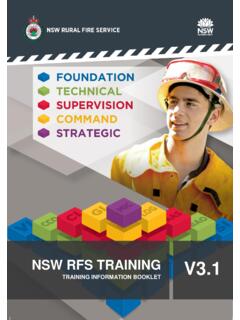Transcription of Flying Exogenous Factors Affecting Aircrew Efficiency
1 UNCLASSIFIED Army Regulation 40 8 Medical Services Temporary Flying Restriction Due to Exogenous Factors Affecting Aircrew Efficiency Headquarters Department of the Army Washington, DC 22 March 2019 SUMMARY of CHANGE AR 40 8 Temporary Flying Restriction Due to Exogenous Factors Affecting Aircrew Efficiency This major revision dated, 22 March 2019 o Implements NATO Standardization Agreement 3474 (edition 5) (para 1). o Defines personnel serving as aeromedical providers (4a). o Defines the responsibilities of Aircrew members (para 4b).
2 O Added provision for underwater escape/ helicopter emergency Egress Device under hyperbaric exposure (para 7h). o Added Flying restrictions following dilated eye exams or use of topical ocular medications (para 8). o Updates reference publications, forms and internet Uniform Resource Locators (throughout). *This revision supersedes AR 40-8, dated 16 May 2007. AR 40 8 22 March 2019 UNCLASSIFIED i Headquarters Department of the Army Washington, DC *Army Regulation 40 8 22 March 2019 Effective 22 April 2019 Medical Services Temporary Flying Restriction Due to Exogenous Factors Affecting Aircrew Efficiency History.
3 This publication is a major re-vision. Summary. This regulation provides im-plementation guidance for NATO Stand-ardization Agreement 3473 (edition 5). Applicability. This regulation applies to the Regular Army and the U. S. Army Reserve. It also applies to all Department of the Army civilian or contractor personnel, unless otherwise stated. Proponent and exception authority. The proponent of this regulation is The Sur-geon General. The proponent has the au-thority to approve exceptions or waivers to this regulation that are consistent with con-trolling law and regulations.
4 The proponent may delegate this approval authority, in writing, to a division chief within the pro-ponent agency or its direct reporting unit or field operating agency, in the grade of colo-nel or the civilian equivalent. Activities may request a waiver to this regulation by providing justification that includes a full analysis of the expected benefits and must include formal review by the activity s sen-ior legal officer. All waiver requests will be endorsed by the commander or senior leader of the requesting activity and for-warded through their higher headquarters to the policy proponent.
5 Refer to AR 25 30 for specific guidance. Army internal control process. This regulation contains internal control provi-sions in accordance with AR 11 2 and identifies key internal controls that must be evaluated (see appendix B). Supplementation. Supplementation of this regulation and establishment of agency, command, and installation forms are prohibited without prior approval from Headquarters, Department of the Army (DASG HCZ), Washington, DC 20310. Suggested improvements.
6 Users are invited to send comments and suggested improvements on DA Form 2028 (Recom-mended Changes to Publications and Blank Forms) directly to HQDA (DASG HCZ) Washington, DC 20310. Distribution. This regulation is availa-ble in electronic media only and is intended for the Regular Army, the Army National Guard/Army National Guard of the United States, and the Army Reserve. Contents (Listed by paragraph and page number) Purpose 1, page 1 References 2, page 1 Explanation of abbreviations and terms 3, page 1 Responsibilities 4, page 1 General 5, page 1 Exogenous Factors 6, page 2 Vision 7, page 3 Appendixes A.
7 References, page 4 B. Internal Control Evaluation, page 5 Glossary AR 40 8 22 March 2019 1 1. Purpose This regulation implements NATO STANAG 3474 (edition 5). It stipulates the minimum self-imposed temporary re-strictions to be placed upon Aircrew following exposure to certain physiological conditions in order to ensure optimal physiologic and psychological fitness in Aircrew . 2. References See appendix A. 3. Explanation of abbreviations and terms See the glossary. 4. Responsibilities The Surgeon General (TSG) has the overall responsibility for temporary Flying restrictions due to Exogenous Factors af-fecting Aircrew Efficiency .
8 TSG will ensure a. Aeromedical providers are aware of the Exogenous Factors Affecting flight duties and the appropriate preventative measures to mitigate the potential associated aeromedical risk. The aeromedical provider will supervise and coordinate all medical treatment of all Aircrew members for reasons of flight safety. The term aeromedical provider refers to the following personnel: (1) Flight Surgeon (FS); Area of Concentration (AOC); 65DM3. (2) Aeromedical Physician Assistant (APA); AOC 65DM3. (3) Aviation Medicine Nurse Practitioner (AMNP); AOC 66NP1.
9 (4) Aviation Medical Examiner (AME). b. Aircrew members consult an aeromedical provider anytime a physical or psychological condition is suspected or known to be detrimental to the safe performance of flight duty. Aircrew members will notify their aeromedical provider when they have participated in activities or received treatment for which Flying restrictions may be appropriate. This in-cludes exposure to Exogenous Factors listed in this regulation as well as any treatment or procedure performed by a non-aeromedical provider.
10 This includes, but is not limited to, the following: (1) Any medical or dental procedure requiring use of medication after the treatment. (2) Any medical or dental procedure requiring the use of any type of anesthesia or sedation. (3) Treatment by mental health professionals, including but not limited to psychological, social, psychiatric, alcohol, or substance abuse counseling. (4) Any chiropractic or osteopathic manipulative treatment. (5) Any treatment given by a homeopath, naturopath, herbalist, or practitioner of other types of alternative medicine.










